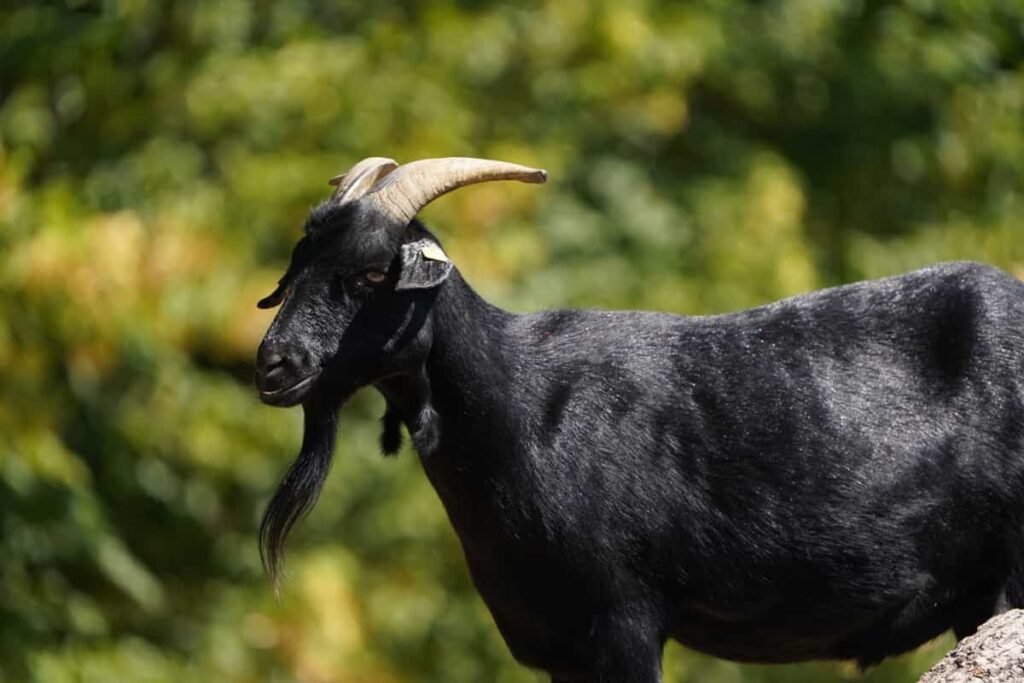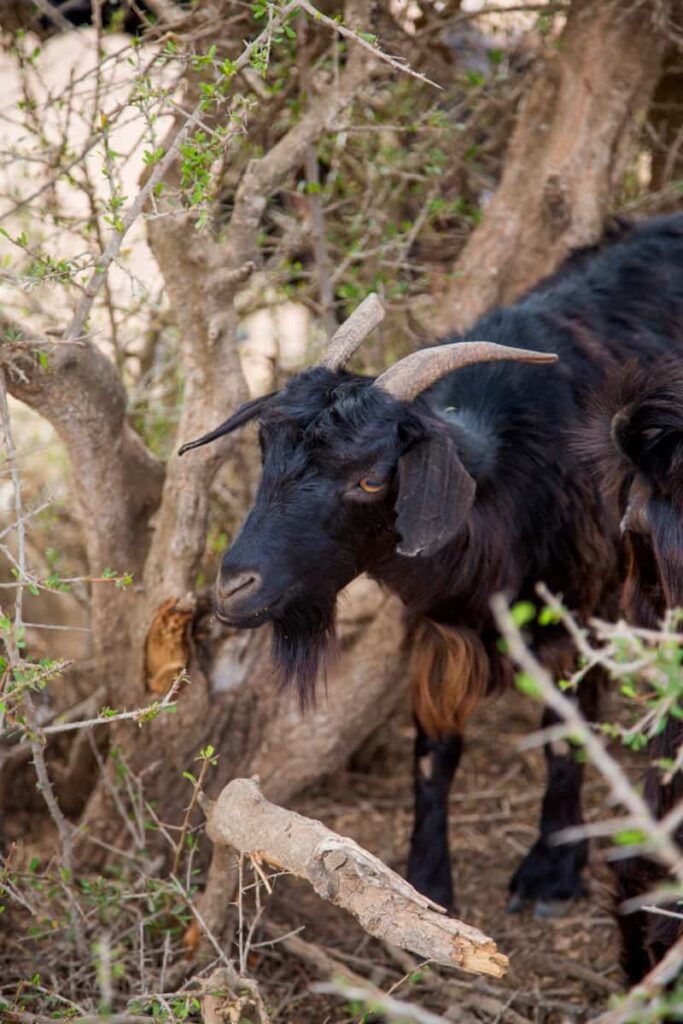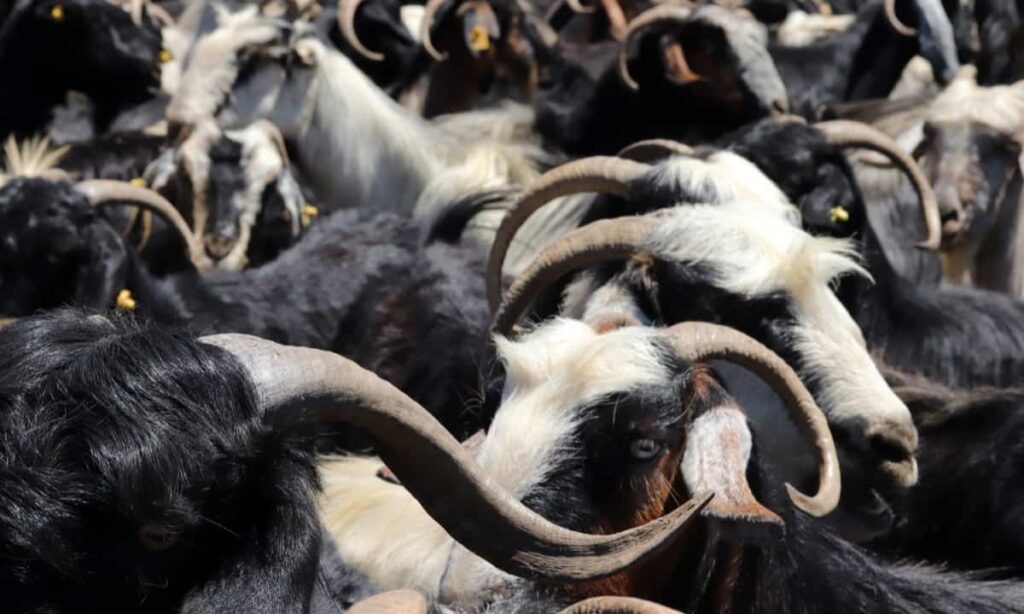Verata goats have developed a strong resistance to harsh weather conditions, making them well-suited for various climates. They can thrive in both hot summers and cold winters. The Verata goat is a remarkable breed with unique characteristics and dual-purpose capabilities. Originating from the comarca of La Vera in Spain, these goats are highly valued for their meat and milk production.

Verata Goat Facts
Housing Requirement for Verata Goats
Providing them with a suitable and comfortable environment is essential for their well-being. The first thing to consider is the size of the shelter. Make sure it is spacious enough to accommodate all your goats comfortably, allowing them room to move around freely. A well-ventilated barn or shed works best for housing Verata goats, as good airflow helps keep the area clean and minimizes the risk of respiratory diseases. Additionally, ensure the shelter has adequate insulation to protect against extreme weather conditions.
Another important aspect of goat housing is flooring. Ideally, use materials such as concrete or rubber mats that are easy to clean and provide good traction for your goats. This will prevent accidents and injuries caused by slippery surfaces. To create a safe environment, ensure no sharp edges or objects could harm your goats inside their living space. Provide ample fresh water sources within your Verata goats’ housing area. It’s crucial for their hydration and overall health.
Characteristics of Verata Goats
The Verata goat, with its distinctive appearance and unique characteristics, is a breed that stands out among others. These goats have medium-sized body with well-developed muscles, giving them a sturdy and robust look. One of the most noticeable characteristics of the Verata goat is its coat coloration. They come in shades like white, black, or even a combination of both colors.
This diversity adds to the visual appeal of these goats and makes them stand out from the crowd. Another interesting feature of Verata goats is their adaptability to different climates. Whether it’s hot summers or cold winters, these resilient creatures can thrive in various environmental conditions without much difficulty. This adaptability makes them ideal for farmers living in regions with fluctuating weather patterns.
Moreover, Verata goats are known for their agility and quick movements. This characteristic not only helps them graze on hilly lands but also aids in escaping predators when necessary. Additionally, these goats have excellent reproductive capabilities, making them highly valuable for breeding. They exhibit high fertility rates and give birth to healthy offspring consistently.
Steps to Raise Verata Goats
- Secure Proper Housing: Ensure your goats have a secure and spacious shelter to rest comfortably. Provide adequate ventilation to prevent respiratory issues.
- Optimal Feeding: Feed your Verata Goats high-quality hay, grains, and fresh vegetation. A balanced diet will contribute to their overall health and productivity.
- Regular Health Care: Schedule regular check-ups with a veterinarian to monitor your goats’ health. Vaccinations, deworming, hoof trimming, and proper hygiene practices are essential for their well-being.
- Exercise and Pasture Grazing: Allow ample space for exercise as these active animals enjoy roaming freely in open areas or grazing on pastureland.
- Breeding Management: Determine the appropriate breeding time based on the reproductive cycle of Verata Goats. Seek guidance from experienced breeders or veterinarians if needed.
Verata Goat Milk Production
Known for its high milk yield, this breed can provide an average of 2-3 liters of milk per day. The Verata goat’s ability to produce such a substantial amount of milk makes it highly valued among farmers and dairy enthusiasts.
In case you missed it: Innovative Housing and Shelter Designs for Profitable Goat Farming

Verata Goats Weight
On average, male Verata goats weigh around 80 kilograms, while female goats have a slightly lower weight of about 70 kilograms. This difference in weight can be attributed to various factors such as genetics and nutrition. Understanding the typical weights of male and female Verata goats allows farmers to make informed decisions regarding breeding programs and selecting animals for specific purposes such as meat or milk production.
Facts about Verata Goats
| Breed Name | Verata |
| Breed Size | Small-Medium |
| Weight | Male: 80 kgFemale: 70 kg |
| Horns | Yes |
| Climate Tolerance | All Climates |
| Coat Color | Mainly black, chestnut, or grey in coloration |
| Good for Stall Fed | Yes |
| Rarity | Common |
| Country/Place of Origin | Spain |
Feeding Tips for Verata Goats
- Feeding Verata goats is an important aspect of their care and well-being. These animals have specific dietary needs that must be met to ensure their health and productivity.
- Verata goats are known for being adaptable and resilient, making them well-suited to various feeding systems. They can thrive on both pasture-based diets as well as grain supplementation.
- Supplemental feeding may be necessary during certain times of the year when grazing resources are limited or during periods of high energy demand, such as pregnancy or lactation. This can include providing hay, silage, or concentrates formulated specifically for goats.
- It’s important to closely monitor the body condition score of Verata goats and adjust their feed accordingly. Overfeeding can lead to obesity and related health issues, while underfeeding can affect milk production or growth rates.
- Proper feeding practices are essential for maintaining the health and productivity of Verata goats.
Health Care Tips for Verata Goats
Verata goats also require regular veterinary check-ups like any other animal to ensure their overall health and well-being. A veterinarian can conduct routine physical examinations, administer vaccinations, and provide guidance on parasite control. Providing a balanced diet is essential for the optimal health of Verata goats. They should always have access to clean water and be fed a nutritious mix of hay, grains, and fresh greens.
It’s important to consult with an expert to determine the specific nutritional needs based on age, weight, and stage of lactation. To protect against common diseases and infections, following a vaccination schedule recommended by your veterinarian is crucial. This helps prevent various illnesses that can impact the overall productivity of the herd.
Maintaining clean living conditions is vital for keeping Verata goats healthy. Encouraging physical activity through exercise promotes muscle development and mental stimulation among Verata goats. Providing them with enough space to roam freely and engaging toys or structures enriches their lives.
In case you missed it: Exploring the Art of Goat Farming in Kashmir Valley

Conclusion
Verata goats are known for their unique characteristics and qualities that set them apart from other breeds. When raising Verata goats, proper housing and feeding are vital in ensuring their health and well-being. It is essential to provide them with a comfortable shelter that protects them from extreme weather conditions. Caring for Verata goats also involves regular health check-ups and vaccinations to prevent potential diseases or infections.
Note: The images presented in this post are intended solely for representation purposes. The images are meant to serve as visual aids and should not be relied upon as accurate representations of their real-life counterparts.
- Goat Milking Practices and Equipment: A Beginner’s Guide
- Goat Farming for Fiber: Producing Mohair and Cashmere
- Maximizing Goat Milk Production: Tips for Dairy Goat Farmers
- Goat Farming as a Family Business: Strategies for Success
- Profitable Kenya Goat Breeds for Commercial Dairy and Meat Business
- Unlock the Secrets of Oberhasli Goat: Discover Raising and Management Practices
- Ultimate Guide to Myotonic Goats: Explore Profile to Raising
- Unlock the Secrets of Rove Goat: Discover Management Practices
- Ultimate Guide to Malwa Goat: Explore from Origin to Management Practices